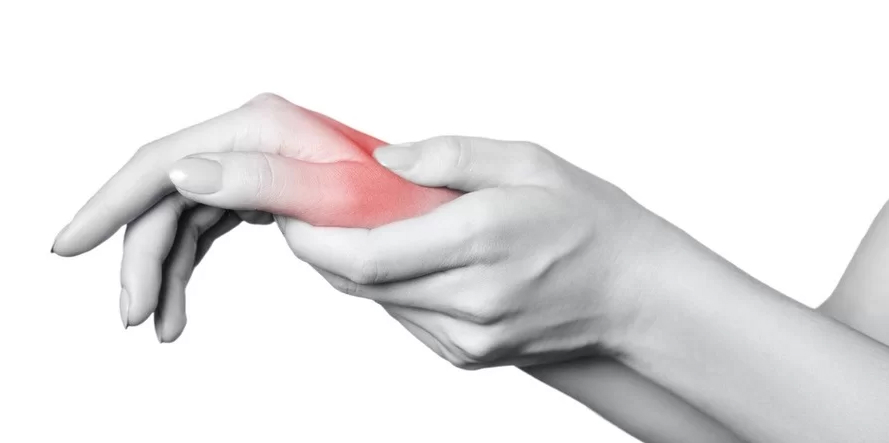Thumb arthritis, specifically at the basal joint or carpometacarpal (CMC) joint, is a common condition characterized by the wearing away of cartilage in the joint at the base of the thumb where the metacarpal bone connects with the trapezium bone of the wrist.
This joint is crucial for thumb movement and is susceptible to wear and tear due to its frequent use. As the cartilage deteriorates, it can lead to pain, stiffness, and decreased grip strength.
The carpometacarpal (CMC) joint is crucial for thumb movement and dexterity due to its high degree of mobility. This joint allows for flexion/extension, abduction/adduction, and rotation, enabling the thumb to oppose and interact with the other fingers. However, this mobility also makes the joint susceptible to instability and degeneration from overuse, leading to ligament laxity and cartilage wear.
Due to its constant use and complex movements, the CMC joint is susceptible to degenerative changes over time. As the joint ages, the cartilage, which normally provides a smooth gliding surface for the bones, can wear down.
The loss of cartilage leads to increased friction between the bones, causing pain, stiffness, and further damage to the joint surfaces. Since the thumb is crucial for many hand movements, individuals with thumb basal joint arthritis experience significant challenges in performing everyday activities.
Thumb arthritis, specifically at the basal joint, can arise from a combination of factors. Some of the most common ones are the following:
Pain is the first and most common symptom of thumb arthritis. Pain can occur at the base of your thumb when you grip, grasp or pinch an object, or use your thumb to apply force.
Other signs and symptoms might include:

Thumb arthritis treatment varies based on the severity of your symptoms. If you have mild symptoms, a healthcare provider may recommend at-home treatments like:
Your orthopedic surgeon may recommend steroid injections if your symptoms are severe or get worse. He will inject a steroid solution into your thumb joint. This typically provides pain relief for several months. But injections become less effective over time. At that point, he may recommend surgery.
There are various surgical options for managing the condition.
The most common surgical options include:
Dr. Panagiotis Pantos is a specialist Orthopedic – Upper Limb surgeon with extensive clinical and research experience in upper limb conditions and sports injuries. He offers personalized treatment plans tailored to the specific needs of each patient, ensuring a careful and responsible approach to care.
He is the Director of the Orthopedic Clinic, Upper Limb Surgery Department, at the Athens Medical Group (AMG) and the Scientific Director and Head of the Upper Limb and Sports Injuries departments at “OSTEON” Orthopedic & Spine Clinic. He holds a PhD from the Medical School of the National and Kapodistrian University of Athens (EKPA).
Please, contact the doctor to schedule an appointment and learn more about how he can give you a safe and effective solution to your problem.
Fill in your details below and we will contact you immediately!
WIN THE
MATCH POINT IN THE RACE
OF YOUR HEALTH!